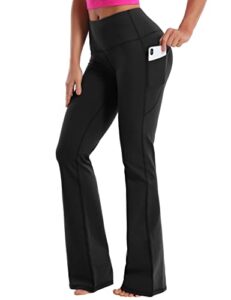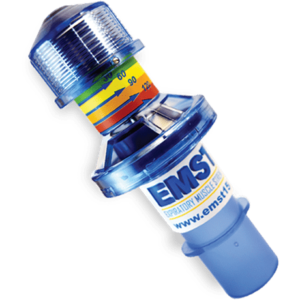Waterproof headphones for swimming are designed to function in wet environments. They ensure listening to music or audiobooks while submerged is possible.
Engaging in aquatic activities doesn’t mean you have to forgo your favorite tunes or podcasts. With the advent of waterproof headphones for swimming, you can dive into your workout while keeping your motivation high with crystal-clear sound. These specialized headphones often come in a variety of styles, including in-ear and bone conduction models, providing options for comfort and sound clarity.
Offered by numerous brands, they’re built to withstand not just water, but also the pressure that comes with different swimming depths. Whether you’re a professional swimmer or someone who enjoys a leisurely swim, waterproof headphones can enhance your experience by making it rhythmic and entertaining. Always prioritize models that offer secure fit, robust waterproofing, and high-quality audio performance for the best underwater listening experience.
Splashing Melodies: The Rise Of Waterproof Audio Tech
Gone are the days when water and electronics made a dreaded combination. Today, swimmers can enjoy their favorite tracks while doing laps in the pool. Bathed in innovation, waterproof audio technology presents a harmonious blend of sound and swim.
Almost like magic, today’s headphones transform swim routines into immersive experiences. Let us dive into this transformation.
| Year | Breakthrough |
|---|---|
| Early 2000s | First waterproof MP3 players |
| 2010s | Better sealing techniques for devices |
| 2020s | Wireless swimming headphones emerge |
With these leaps, audio for swimmers got sharper and safer.
Here’s how manufacturers protect your music from water damage:
- Seals: Special gaskets prevent water invasion.
- Nano-coating: Thin layers safeguard internal components.
- Pressure testing: Ensures endurance against water pressure.
Every headphone endures rigorous tests to ensure unrivaled performance in wet conditions.
Types Of Swimming Headphones
Explore the world of swimming headphones, tailored for underwater audio experiences. Wired options offer reliability, while wireless tech brings Bluetooth convenience. Bone conduction models ensure clear sound without blocking ears, ideal for swimmers who need to stay alert.
Dive into the world of swimming headphones. These devices let swimmers enjoy tunes underwater. But not all headphones are the same. We explore two main types: bone conduction and traditional earbuds. Both types have unique features. Find the perfect fit for your swim sessions.
Bone Conduction: Sound Through The Skull
Bone conduction headphones are futuristic. They rest on your cheekbones. The sound travels directly through your skull to your inner ear. This technology has key benefits for swimmers:
- Keeps ears open to hear surrounding noises.
- Provides comfort without plugging into the ears.
- Effective in noisy environments like swimming pools.
They’re a great choice if you want to stay alert. These headphones also work well with swim caps and goggles.
Traditional Earbuds: Sealed And Submersible
Traditional swimming earbuds offer a classic feel. They fit snugly into the ear canal. Here are their standout features:
| Feature | Benefit |
|---|---|
| Waterproof Seals | Protects against water damage, allows deep immersion. |
| Snug Fit | Reduces risk of falling out during laps. |
They’re perfect for those who prefer traditional earphones. Remember to check for proper fit to ensure water doesn’t seep in.
Critical Features For Swimmers’ Headphones
Finding the perfect headphones for swimming is not just about sound quality. Features like water-resistance and a secure fit are crucial. These aspects ensure that your audio gear enhances your swim rather than hinders it. Let’s dive into the essential features you need to consider when choosing the right pair.
Water Resistance Ratings Explained
Understanding water resistance ratings is key to picking suitable headphones for swimming.
| Rating | Description |
|---|---|
| IPX0 | No protection against water. |
| IPX1 to IPX4 | Protection from dripping to splashing water. |
| IPX5 to IPX6 | Protection from water jets to strong water jets. |
| IPX7 and above | Protection against immersion in water for a specific duration. |
For swimmers, headphones with IPX7 or higher promise the best protection. These devices can withstand being submerged in water, making them ideal for swimming.
Ergonomics And Security: Staying Put During Laps
A secure fit is non-negotiable when choosing headphones for swimming. The headphones must stay in place during vigorous movements.
- Ear Hooks: Provide extra security, anchoring headphones to your ear.
- Fin Tips: These adapt to the shape of your ear canal for a snug fit.
- Band Style: Wraps around your head or neck, reducing the chance of losing a bud.
Ergonomic design also contributes to comfort, essential for long swim sessions. Look for lightweight models with soft, malleable materials that conform to your head and ears.

Credit: www.temu.com
Sound Quality Underwater
When you dip into the water with your headphones, the sound you experience is unlike anything on land. The sensation of music while swimming can transform laps into a rhythmic dance. Sound Quality Underwater takes a dive into the world of aquatic acoustics. Enjoy crystal-clear tunes as you glide through your strokes. Ready to immerse yourself in an aquatic audio adventure?
Audiophile Waves: Balancing Clarity And Depth
Striking the right chord between clarity and depth in underwater headphones is crucial. It’s not just about volume; it’s about the clear sound at any depth. Here’s what top-tier swimming headphones offer:
- Balanced Bass: Deep, yet not overpowering, to match the water’s density.
- Crisp Highs: Tweaked to cut through the water, ensuring treble isn’t lost.
- Vibrant Mids: Kept strong to carry the melody seamlessly through your swim.
Technical Challenges: Overcoming Underwater Acoustics
Underwater acoustics pose a unique set of challenges for audio engineers. Unlike air, water changes how sound waves travel. Top solutions include:
| Technology | Benefit |
|---|---|
| Bone Conduction | Transmits sound through the cheekbones, bypassing the ear canal. |
| Waterproof Seals | Prevents water interference, maintaining sound integrity. |
| Hydrodynamic Design | Reduces drag and flow noise, enhancing audio clarity. |
Bluetooth Connectivity Vs. Mp3 Storage
Choosing the right headphones for swimming is crucial. Sound quality, safety, and comfort are important. Yet, the battle of Bluetooth connectivity versus MP3 storage stands out. Both options offer unique benefits. Let’s dive into the specifics of each to help you decide.
Wireless Wonders: Syncing Songs Poolside
Bluetooth-enabled headphones bring wireless convenience to swimmers. Easy syncing with devices means more flexibility and fresh playlists. Here’s why they can be a game-changer:
- Seamless Connectivity: Pair with a smartwatch or waterproof MP3 player.
- Range of Motion: No wires ensure freedom while swimming laps.
- Contemporary Tech: Advanced features like touch controls enhance the experience.
Yet, remember, Bluetooth signals struggle underwater. The connection works best above the surface. Keep your device close for optimal performance.
Built-in Mp3 Players: The Offline Playlist Advantage
Some swimmers prefer the classic approach. Headphones with built-in MP3 storage suit those who enjoy uninterrupted listening. The perks include:
- No Dependency: Leave phones behind. Store hundreds of songs directly.
- Battery Life: MP3 headphones typically last longer than Bluetooth versions.
- Consistent Playback: Stable audio without signal concerns underwater.
This option is ideal for consistent, drop-free audio. However, changing playlists is less convenient compared to Bluetooth syncing. Prioritize based on your needs.
| Feature | Bluetooth Headphones | MP3 Headphones |
|---|---|---|
| Wireless Connectivity | Yes | No |
| Music Storage | Dependent on external device | Built-in storage |
| Battery Life | Varies | Often longer |
| Underwater Signal | Limited | Not applicable |
| Sound Quality | Depends on device | Generally stable |
| Price Range | Varies | May have a premium |
Battery Life And Charging Considerations
Battery life and charging are the heartbeats of headphones for swimming. Imagine gliding through the water, synchronizing your strokes with the rhythm of music. But what good is that beat if it stops midway through your swim? That’s where endurance and charging options come into play. They keep your tunes flowing, swim after swim.
Duration And Durability: Ensuring Long Swims With Tunes
Battery duration matters in water-proof headphones. A long-lasting battery means more laps with your favorite beats. Look for models offering multiple hours on a single charge. Durable batteries withstand water, chlorine, and salt. This keeps your music playing, no matter the pool or sea conditions.
| Headphone Model | Battery Life (Hours) | Water Resistance Level |
|---|---|---|
| Model A | 10 | IPX8 |
| Model B | 8 | IPX7 |
| Model C | 12 | IPX8 |
Stamina and strength ensure your music endures your entire swim session.
Charging Methods: From Cables To Cases
Convenient charging makes life easier for swimmers. Some headphones use USB cables, while others use charging cases.
- USB cables are common but check for a waterproof seal.
- Charging cases offer a place to store and charge your headphones.
- Wireless charging is growing in popularity for hassle-free power.
Choose headphones with a quick charge feature to get back in the water fast. These options ensure your headphones are always ready for your next swim.
Durability And Maintenance
Quality headphones must stand up to the elements, especially when taken for a swim. In this part of the blog, we’ll dive into the factors that make headphones suitable for swimming, like their ability to handle chlorine and saltwater. We’ll also share vital tips on how to care for your headphones after each swim, ensuring they last longer and provide the best sound experience underwater.
Material Matters: Surviving Chlorine And Saltwater
Swimming headphones must resist the damaging effects of both chlorine and saltwater. The materials used in these headphones are crucial. Look for rubber and plastic compounds that are known to withstand corrosive environments. Quality swimming headphones often boast IPX ratings, which is a measure of their waterproof capabilities.
IPX8 is one of the highest waterproof ratings you can find, meaning, your headphones can be submerged deeply and still function flawlessly. These high-rated materials prevent chlorine from breaking down the seals or saltwater from causing rust.
Cleaning Your Headphones: Post-swim Care
Clean headphones mean lasting headphones. Post-swim care is simple but vital. After swimming, always rinse your headphones with fresh water. This practice removes any chlorine or salt that could eat away at the material over time.
- Dry with a soft, lint-free cloth.
- Use a gentle brush for any crevices where salt or sand might hide.
- Store them in a cool, dry place away from direct sunlight.
By sticking to these maintenance steps, you extend your headphones’ lifespan and keep the sound quality crisp for your next aquatic adventure.
Safety Measures And Awareness
Diving into the pool with music may sound thrilling. Yet, it’s crucial to balance enjoyment with safety. This section shines a light on how you can enjoy underwater soundtracks without compromising on your well-being. Embrace these tips and keep your aquatic adventures safe.
A Sound Balance: Volume Versus Environmental Awareness
Keeping the volume in check is vital for two reasons. First, it ensures your eardrums are protected. Second, it allows you to stay aware of your surroundings. Here’s how you can maintain a sound balance:
- Set your volume to a level where you can still hear poolside whistles or alarms.
- Avoid using noise-cancelling headphones which can block important external sounds.
- Use waterproof headphones designed for swimming, which often limit volume to safe levels.
Swimming With Sound: Risks And Preventions
Let’s dive deeper into potential risks and how to prevent them:
| Risk | Prevention |
|---|---|
| Ear Infections | Choose headphones with good fit and waterproof features. |
| Distraction | Be mindful and maintain focus on your swim and safety. |
| Damage to Headphones | After swimming, clean and store your headphones properly. |
To sum it up, swim responsibly with your tunes. Keep your music at a sensible volume. Choose the right headphones. Take good care of them. Most importantly, stay alert and enjoy your swim safely.
Top Picks And User Reviews
Welcome to the deep dive into the ultimate underwater soundtrack experience: headphones for swimming. Imagine executing the perfect freestyle stroke while jamming to your favorite tunes. Selecting the right pair can transform your swim into an audio aqua adventure. Discover top-rated options based on actual user feedback.
The Favorites For Freestyle: Community Choices
Swimmers prefer these picks:
- HydroHarmony Headphones: Loved for their secure fit.
- AquaBeat Sync: High marks for clear sound underwater.
- SwimSound Elite: Praises for their long battery life.
These choices stand out in online forums and shopping sites worldwide.
Making Waves: Personal Stories Of Aquatic Audiophiles
Real testimonials tell the tale:
| User | Product | Experience |
|---|---|---|
| Mark S. | HydroHarmony | “Changed my swim game. No slips, just music and laps.” |
| Lisa P. | AquaBeat | “Underwater clarity is unmatched. Feels like a concert.” |
| Devon T. | SwimSound | “Battery lasts my entire swim. Pure bliss.” |
Each user’s story showcases passion and the impact of music on their swim training.

Credit: www.amazon.com
Setting Up Your Swim Soundtrack
Imagine gliding through water with your favorite tunes. Music turns laps into joy. Perfect playlists and the right headphones can make it happen. Set your swim to music!
Playlist Tips: Crafting The Perfect Swim
Choosing songs for swimming isn’t just hitting shuffle. A swim playlist needs rhythm and pace. Think of your strokes as dances. Your music should match that dance. Let’s dive into making that perfect underwater mix.
- Start with warm-up songs – slower beats help you ease in.
- Build energy with uptempo tracks as you pick up pace.
- Include steady rhythm songs for consistent pacing.
- Finish with cool-down melodies to relax your muscles.
Securing The Beats: Attaching Headphones For Optimal Performance
Great sound under water needs more than just waterproof headphones. They must stay put. You’ll want to swim, not fiddle with gear. Here’s how to make sure your headphones stick with you through every stroke.
- Choose headphones made for swimming. They will fit tight and right.
- Check the ear tips. They should seal without hurting your ears.
- Test the clip or band. It should grip your goggles or swim cap well.
- Do a dry run. Before the pool, ensure they’re comfortable and secure.

Credit: www.amazon.com
Frequently Asked Questions For Headphones For Swimming
Can You Wear Headphone While Swimming?
Yes, you can wear headphones while swimming, but ensure they are waterproof and designed specifically for swimming activities. Always follow the manufacturer’s guidelines for depth and usage duration to prevent damage.
Which Headphones Are Good For Swimming?
Waterproof MP3 players with earbud attachments, such as the Sony NW-WS413LM and the SYRYN MP3 player with Swimbuds headphones, are recommended for swimming.
Can I Listen To Music While Swimming?
Yes, you can listen to music while swimming by using waterproof earphones and an underwater music player designed for aquatic use. Just ensure your devices meet the appropriate water resistance rating.
Are There Any Fully Waterproof Headphones?
Yes, fully waterproof headphones exist, designed for swimming and other water activities, with various brands offering models that meet different waterproof standards.
Can You Swim With Headphones?
Yes, specific models designed for swimming can be waterproof and suitable for swimming.
How Do Waterproof Headphones Work?
Waterproof headphones use a sealing mechanism to prevent water ingress, thereby protecting the internal components.
What Are The Best Swimming Headphones?
The best swimming headphones offer a watertight seal, superior audio quality, and a secure fit.
Conclusion
Diving into the perfect swim session needs the right gear, and headphones are no exception. With options designed to endure and enhance, your underwater audio experience awaits. Choose from our top picks and make every lap rhythmic and immersive. Remember, the best swim is one with a soundtrack tailored just for you.
Dive in!
















